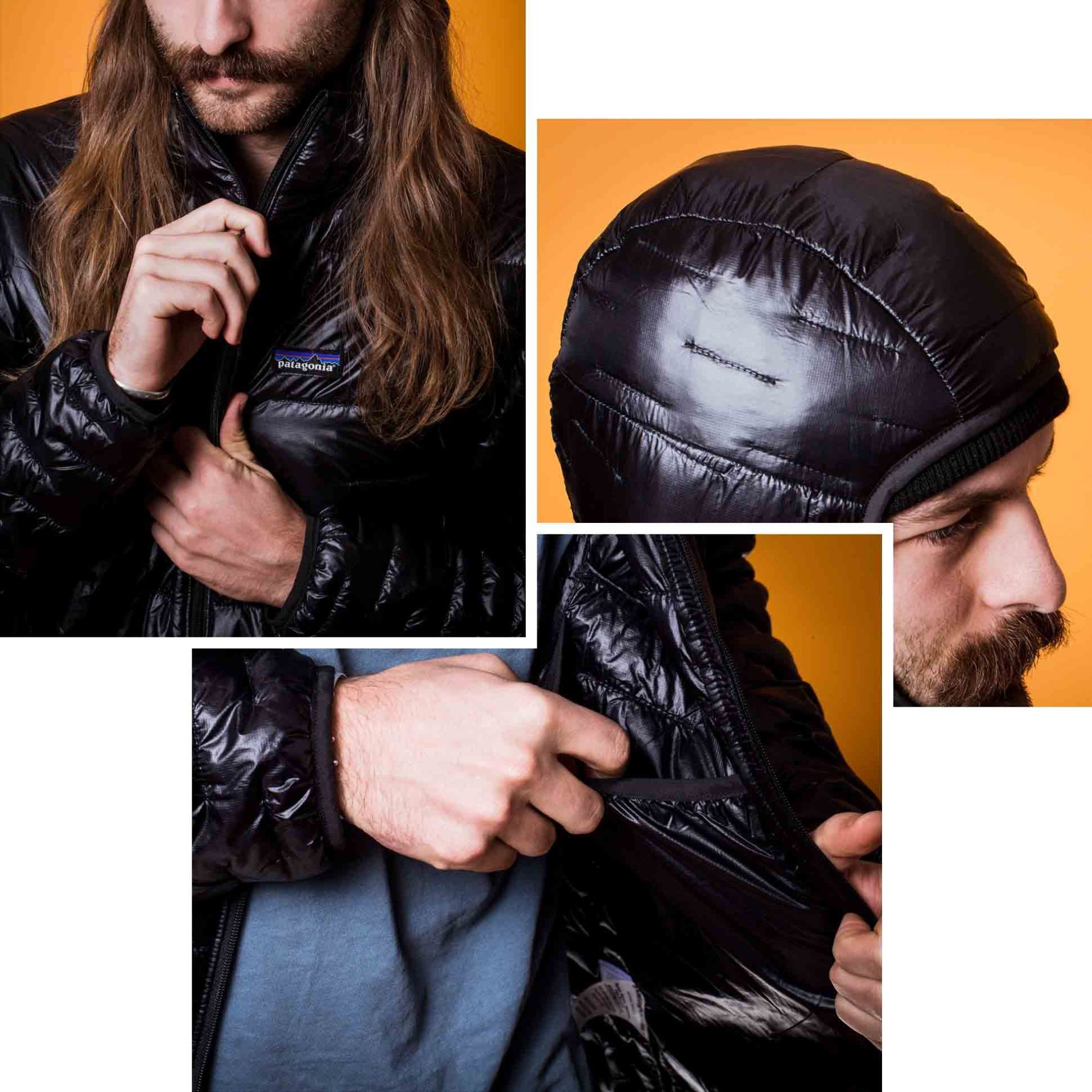“We tried everything and came up with nothing,” declares the splashy text at the top of Patagonia’s website announcing its latest innovation: the Micro Puff Hoody. It’s a tricky play on words (and a damn smooth humblebrag), but it gets right to the point — the Micro Puff is the lightest insulated jacket that Patagonia has ever made. But does that mean you should buy it?
Let’s start with a (very) brief history lesson. Jackets filled with synthetic insulation have been around since the 1970s, when small groups of gear pioneers began experimenting with a fluffy polyester batting called Dacron that was manufactured by DuPont. Climbers and adventurers such as MSR’s Larry Penberthy and the National Outdoor Leadership School’s Paul Petzoldt prized the stuff for its ability to combat the deleterious effects that rain and moisture had on down insulation, which had been the standard bearer for lightweight warmth since Eddie Bauer began selling his Skyliner Jacket in 1936. Since those early days, synthetic insulation has been continually pushed by materials producers like Polartec and PrimaLoft (along with brands big enough to house their own R&D departments) to be both lighter and warmer.
Micro Puff Hoody Specs

Weight: 9.3 ounces (264 grams)
Shell and Lining: 0.7-ounce 10-denier 100% nylon ripstop Pertex Quantum with a DWR finish
Insulation: 65-gram PlumaFill 100% polyester
Innovation has been a vital piece of Patagonia’s business model since Yvon Chouinard began forging his first climbing hardware using an anvil he bought from a local scrapyard. Developing proprietary materials instead of sourcing them from suppliers, as many outdoor brands do, has been a core factor in Patagonia’s consistent ability to be an industry leader and not a follower. Some of its breakthroughs include polyester fleece and polypro base layers, and, more recently, active insulation and neoprene-free wetsuits.
The Micro Puff is another tally on Patagonia’s nigh half-decade long progress report. On the outside, it looks just like any other synthetic insulation jacket, if not with just a little extra sheen. Instead of using horizontal baffles, as it does with many of its down jackets, or the quilted design exemplified in the synthetic Nano Puff, Patagonia applied a unique stitching pattern to create a mostly-continuous maze of channels that prevent the insulation from bunching. The shell itself is a super lightweight, water-repellent ripstop nylon called Pertex Quantum.

